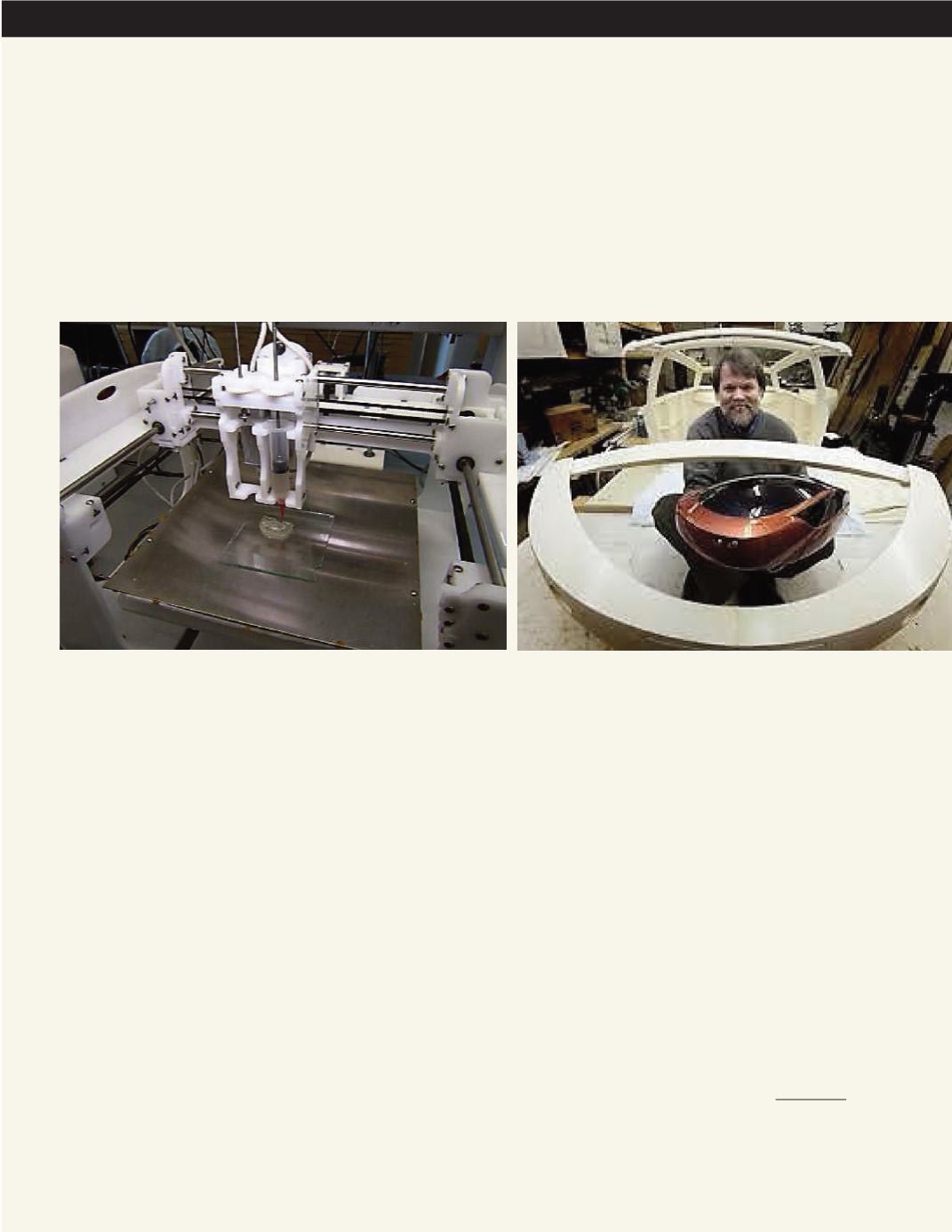
12
3DBioprintingof ArtificialOrgans,
Consumer ProductsWill Impact Plenco
Families in the 21st Century
ExcitingNews from theFuture
J
ust about every Plenco family has a personal computer,
smartphone, iPad or similar digital device to access the
Internet, based on estimates by Plenco’s IT department.
Chances are, you probably have an HP, Lexmark, or other
brandof two-dimensional printer.
But have youheard about the new 3Dprinting technology?
Sophisticated 3D printers are being developed to print
literally everything from automobile parts to artificial organs!
This is digital technology that could change all of our lives in
the near future.
Scientists fromCornellUniversitycreated an artificial human
ear earlier this year by printing it on a 3D printer, Graeme
Newman reported in the May 6, 2013, issue of Insurance
Journal. The artificial ear was created by squirting living cells
into an injectionmold.
The ears could replace thoseof individualswhohave lost all
or part of their ear in an accident or due to cancer, or for
children with congenital defects. Scientists believe the tech-
nology could result in custom-built replacement organs that
would reduce the need for organ donations and the perils of
transplant rejection. It could radically expand breast and
pancreatic cancer, Alzheimer’s, Parkinson’s, and many other
cancer treatments.
3D printing technology is not new. For the past 20 years,
designers and manufacturers have been using it to produce
prototypes before undergoing the lengthy and expensive
process of massmarket production.
Until recently, the prospect that 3D printing could be used
by scientists to createbodypartsor by consumers to clone car
parts frommetal “inks” seemed like a fantasy from a science
fictionmovie.
In the 21st century, it will become a reality that could very
well improve thequalityof life forPlenco employees and their
families.
CBS Sunday Morning presented a fascinating segment on
3DBioprinting.
Towatch theCBS vide
3DPrinting: TheNext Dimension - CBSSundayMorning photos


